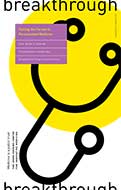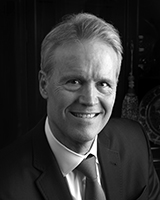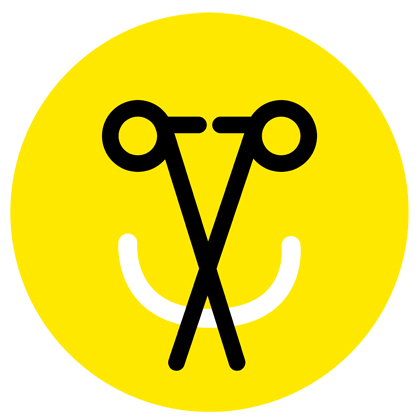

David B. Hellmann,
MD, MACP
Many of you know that I am huge fan of the musical Hamilton and one of its central themes of relentless determination, which inspired a subsequent rap song with the catchy lyrics: “Immigrants: We Get the Job Done.”
Time and again, I see this determination to “get the job done” play out among the faculty and friends of the Center for Innovative Medicine, in ways big and small. Consider CIM’s annual retreat in late August, which we’d planned to revive (after a one-year hiatus due to COVID-19) at Folly Farm, the beautiful Baltimore County home of Stephanie Cooper Greenberg, who is chair of CIM’s International Advisory Board. While an in-person gathering of 75 to 100 was realistic last spring, when vaccination rates seemed to have COVID-19 on the wane, the Delta variant made those plans increasingly less likely as the summer wore on. But thanks to the pluck, ingenuity and generosity of Stephanie, who truly “got the job done,” the show did go on! In the course of a week, she had an enormous tent erected on her bucolic property, which allowed for about 50 thought leaders from across Johns Hopkins to meet, talk and dream about what’s next for CIM — including, importantly, an ambitious new Institute for Humanizing Medicine. The institute will be led by visionary physician and bioethicist Mary Catherine Beach and Cynthia Rand, senior associate dean for faculty and professor of medicine (p. 2). I’m thrilled that key Johns Hopkins leaders at the retreat — notably Johns Hopkins Hospital President Redonda Miller, Director of the Department of Medicine Mark Anderson and Landon King, executive vice dean for the school of medicine — all spoke compellingly about the importance of this far-reaching initiative.
As you’ll read on p.6, the Institute for Humanizing Medicine builds on the ideas and advocacy of many clinicians with strong ties to the CIM, including Roy Ziegelstein, the Sarah Miller Coulson and Frank L. Coulson, Jr. Professor of Medicine, whose concept of “personomics” is influencing clinicians far and wide, as well as Jeremy Greene, the Jacobs and Rosenthal Family CIM Scholar. Jeremy is leading the charge, at Johns Hopkins and nationally, to make the humanities and social sciences critical forces in the preparation of tomorrow’s doctors (p. 8).
CIM Scholars in other vital areas are also committed to “getting the job done” — including those at CIM’s Human Aging Project (p. 10), pulmonologist and CIM Lavinia Currier Scholar Nadia Hansel, who is investigating dietary changes to aid people with respiratory diseases (p. 12), and leaders of the new faculty promotion track for clinical excellence, which builds on the work of the Miller Coulson Academy of Clinical Excellence.
To all who are working so tirelessly to advance the mission of the CIM, including you, our friends and supporters, I offer sincere thanks and a hearty “Job well done!”.

Aliki Perroti Professor of Medicine
Don Willett November 8th, 2021
Posted In:

David B. Hellmann,
MD, MACP
Many of you know that I am huge fan of the musical Hamilton and one of its central themes of relentless determination, which inspired a subsequent rap song with the catchy lyrics: “Immigrants: We Get the Job Done.”
Time and again, I see this determination to “get the job done” play out among the faculty and friends of the Center for Innovative Medicine, in ways big and small. Consider CIM’s annual retreat in late August, which we’d planned to revive (after a one-year hiatus due to COVID-19) at Folly Farm, the beautiful Baltimore County home of Stephanie Cooper Greenberg, who is chair of CIM’s International Advisory Board. While an in-person gathering of 75 to 100 was realistic last spring, when vaccination rates seemed to have COVID-19 on the wane, the Delta variant made those plans increasingly less likely as the summer wore on. But thanks to the pluck, ingenuity and generosity of Stephanie, who truly “got the job done,” the show did go on! In the course of a week, she had an enormous tent erected on her bucolic property, which allowed for about 50 thought leaders from across Johns Hopkins to meet, talk and dream about what’s next for CIM — including, importantly, an ambitious new Institute for Humanizing Medicine. The institute will be led by visionary physician and bioethicist Mary Catherine Beach and Cynthia Rand, senior associate dean for faculty and professor of medicine (p. 2). I’m thrilled that key Johns Hopkins leaders at the retreat — notably Johns Hopkins Hospital President Redonda Miller, Director of the Department of Medicine Mark Anderson and Landon King, executive vice dean for the school of medicine — all spoke compellingly about the importance of this far-reaching initiative.
As you’ll read on p.6, the Institute for Humanizing Medicine builds on the ideas and advocacy of many clinicians with strong ties to the CIM, including Roy Ziegelstein, the Sarah Miller Coulson and Frank L. Coulson, Jr. Professor of Medicine, whose concept of “personomics” is influencing clinicians far and wide, as well as Jeremy Greene, the Jacobs and Rosenthal Family CIM Scholar. Jeremy is leading the charge, at Johns Hopkins and nationally, to make the humanities and social sciences critical forces in the preparation of tomorrow’s doctors (p. 8).
CIM Scholars in other vital areas are also committed to “getting the job done” — including those at CIM’s Human Aging Project (p. 10), pulmonologist and CIM Lavinia Currier Scholar Nadia Hansel, who is investigating dietary changes to aid people with respiratory diseases (p. 12), and leaders of the new faculty promotion track for clinical excellence, which builds on the work of the Miller Coulson Academy of Clinical Excellence.
To all who are working so tirelessly to advance the mission of the CIM, including you, our friends and supporters, I offer sincere thanks and a hearty “Job well done!”.

Aliki Perroti Professor of Medicine
Don Willett November 8th, 2021
Posted In:
 “R-E-S-P-E-C-T … Find out what it means to me…”
“R-E-S-P-E-C-T … Find out what it means to me…”
Those lyrics from Aretha Franklin’s 1967 hit song undoubtedly resonate with Johns Hopkins internist Mary Catherine Beach. She has devoted much of her 25-year career in medicine to doing just that: investigating how respect and communication play out between patients and clinicians, with the goal of improving care for each patient.
Her work is poised to take a giant leap forward with the CIM’s ambitious new plans to stimulate the creation of an Institute for Humanizing Medicine. Beach and CIM Scholar and Senior Associate Dean Cynthia Rand are leading this CIM initiative. The new institute will unite researchers from campuses, disciplines and divisions across Johns Hopkins University in a far-reaching and systematic effort to better equip clinicians to know their patients as unique individuals.
“Everyone would agree that all patients need to be treated with respect,” says Beach, who holds a joint appointment with Johns Hopkins’ Berman Institute of Bioethics. “But we’re not taking this seriously enough if we don’t have an entity within Johns Hopkins that is addressing this from a tripartite perspective: through rigorous scholarship in education, research and patient care.”
“An Institute for Humanizing Medicine can help Johns Hopkins become as famous for its care as it is for its science,” says CIM Director David Hellmann. “To do that, we will be taking an ‘all in’ approach, drawing in nurses, chaplains, doctors, administrators, medical coordinators and more — from all campuses and for all patients, including outpatients.”
The work of the new institute will be particularly valuable for advancing a patient-centered approach among researchers and clinicians associated with the Johns Hopkins Precision Medicine Centers of Excellence, through which multidisciplinary teams across Johns Hopkins are harnessing the power of big data to improve clinical care for a rapidly growing number of illnesses and conditions.
Small Acts, Outsized Impact
In Beach’s own award-winning research — which has focused on patients in the primary care setting who are being treated for HIV, substance use disorder and sickle cell disease — she has found that it’s the small acts that can make an outsized impact on patients feeling respected by their clinicians.
“We often think of ethics within medicine around big concepts like informed consent, but I have learned that for most patients, respect is a series of micro-events throughout the course of a day that add up,” she says. “Do we, as doctors, apologize if our patient has had to wait 90 minutes to be seen? That’s so important in recognizing that their time matters. Or does someone on the ICU team take a few minutes to brush the patient’s hair, so that family members can be reassured that their loved one looks like themselves? That’s a small act that recognizes that patient as an individual.”
“It’s so important to get diverse perspectives from patients on what respect means to them. If you’ve never been dismissed or not believed, then you’re not going to embed that in a definition of respect.” – Mary Catherine Beach
Another dominant theme that has come up in Beach’s work with patient focus groups: Among African-American men and women, many expressed the need to have their health problems taken seriously, she says, “to be believed, and listened to, and not to have their concerns dismissed.” A concurrent study that Beach conducted, which examined patient health records, bore out their frustration. “Our analysis of medical record language suggests Black patients are less likely to be believed by physicians,” she says.
Working with a linguist and a computer scientist, she and her team identified three aspects of language in clinic notes by which physicians communicate disbelief of patients:
• Quotation marks around patients’ words (e.g., had a “reaction” to the medication)
• Specific judgment words that suggest doubt (e.g., “claims” or “insists”)
• Evidentials, a sentence construction in which patients’ symptoms or experiences are reported as hearsay
“It’s so important to get diverse perspectives from patients on what respect means to them. If you’ve never been dismissed or not believed, then you’re not going to embed that in a definition of respect. As academics, we tend to be respected. The theory needs to be grounded in the experiences of many people,” notes Beach, who intends to further pursue this line of research through the Institute for Humanizing Medicine.
Navigating Uncertainty
Taking the time and asking the right questions to get to the bottom of a patient’s story — where they live and who they live with, the stresses inherent to their job (or joblessness), their financial situation, their ability to access healthy foods and get exercise — are crucial to arriving at an accurate diagnosis and providing the most effective treatment, says Brian Garibaldi, the Douglas Carroll, MD, CIM Scholar, whose ongoing research into bedside care will also be furthered under the new institute.
Garibaldi, recent co-president of the Society of Bedside Medicine, worked with Hopkins colleagues several years ago to craft a curriculum for medical trainees that has improved attitudes, confidence and skill among residents at The Johns Hopkins Hospital.
Taking the time and asking the right questions to get to the bottom of a patient’s story are crucial to arriving at an accurate diagnosis and providing the most effective treatment.
He has also championed the use of “point-of-care” (POC) ultrasound at the bedside with several Hopkins colleagues. “We’re finding this little gadget opens up communication between doctor and patient,” says Garibaldi. “We can point to fluid that’s accumulated and say, ‘This is what a sick heart looks like — this is why you have this symptom.’ Or, ‘Here is how you know that your medication is actually working.’ It engages patients in becoming more motivated to get better, and it allows medical residents to have eureka moments of shared discovery with their patients.”
Most recently, Garibaldi and colleagues published a study in the journal Chest that laid out recommendations for conducting an effective physical exam. Among them: Take a moment to pause and “center yourself” on the individual patient’s needs before going in to meet them. Also: Pursue a “hypothesis-driven” approach to the physical exam. “There are so many directions you can take with a physical exam. It’s really important to know the patient so that you can ask questions that help direct your diagnostic investigations,” he says.
The bottom line, says Garibaldi: “There is a lot of uncertainty in medicine, and much of the time, we need to help patients navigate through that uncertainty — to know what test to order next or what treatment to pursue. The only way we can do that well is if we establish a relationship with that person and know who that person is. I am absolutely in a better position to get to that shared decision-making sooner if I know my patient better. That is likely to translate into more efficient and cost-effective treatment. And most importantly, it allows us to get to the answer that is right for that individual person.”
“There is a lot of uncertainty in medicine, and much of the time, we need to help patients navigate through that uncertainty. The only way we can do that well is if we establish a relationship with that person and know who that person is.” – Brian Garibaldi
An Epicenter for Humanizing Medicine
In her vision for the new Institute for Humanizing Medicine, Beach draws a parallel to Johns Hopkins’ internationally renowned Armstrong Institute for Patient Safety and Quality, which was launched in 2011 with a $10 million gift from philanthropist C. Michael Armstrong. “Before the Armstrong Institute was established, few disagreed that patient safety was important, but there was no systematic program in place to measure patient safety and to define — and fix — preventable medical errors,” says Beach.
In a similar fashion, Beach, Rand, Hellmann and other Johns Hopkins leaders — notably Berman Institute Director Jeffrey Kahn and Jeanne Marie Clark, director of the Division of General Internal Medicine — see an opportunity for Johns Hopkins to become the international epicenter for research and scholarship that will better equip clinicians to humanize their approach to patient care.
“The Center for Innovative Medicine was founded with the mission of making medicine a better ‘public trust,’” says Hellmann.
“This new institute, which will bring together clinicians and researchers from medicine, nursing, public health and other areas across Johns Hopkins, will be critical to continuing to advance that mission.”
Don Willett November 8th, 2021
Posted In:
 The new Institute for Humanizing Medicine builds on the ideas and advocacy of many doctors with strong ties to the Center for Innovative Medicine — chief among them cardiologist Roy Ziegelstein, a Miller Coulson master clinician, the Sarah Miller Coulson and Frank L. Coulson, Jr. Professor of Medicine, and vice dean for education at Johns Hopkins University School of Medicine.
The new Institute for Humanizing Medicine builds on the ideas and advocacy of many doctors with strong ties to the Center for Innovative Medicine — chief among them cardiologist Roy Ziegelstein, a Miller Coulson master clinician, the Sarah Miller Coulson and Frank L. Coulson, Jr. Professor of Medicine, and vice dean for education at Johns Hopkins University School of Medicine.
In a widely cited 2015 editorial in the Journal of the American Medical Association, Ziegelstein first coined the term “personomics” — making the case that in the rush to embrace the high-tech advances of precision medicine, we mustn’t lose sight of the individual patient’s unique life experiences.
In the years since that editorial appeared, the personomics concept has gained traction within the medical community, influencing physicians far and wide. CIM Breakthrough magazine checked in recently with Ziegelstein to find out how his vision continues to shape the national discussion around patient-centered care.
“The vast majority of physicians got into this field because they wanted to make a difference in the lives of individual patients.” – Roy Ziegelstein
“Personomics” is an intriguing term. What inspired you to come up with it?
The suffixes, “-ome” or “-omics” are often added to an area of human biology — witness the rise of genomics, proteomics, metabolomics, epigenomics and pharmacogenomics, for example. These high-tech fields are critical to the precision medicine toolkit. They give us a wonderful understanding of how a disease may progress in an individual patient and the unique course a treatment might take.
But what was in danger of getting lost in the discussion was that individuals are not only distinguished by their biological variability — they are also impacted by their personalities, health beliefs, social support networks, financial resources and other unique life circumstances. The same disease can alter one individual’s personal and family life completely and not affect that of another person much at all. So, I argued that these components of individuality are just as critical to patient care as any of the more traditional “-omics.”
Your editorial found a receptive audience.
Yes, indeed. It’s unusual for me to get an email response after I publish a paper, but I received many, many emails after this article appeared. They were all positive. Perhaps more important, and a bit surprising to me, is that I had expected that those who wrote would be from psychosocial fields. Instead, I was hearing from doctors from hard science fields like genomics and other related “-omics” disciplines. They said that while they believed that these “-omics” would be crucial for guiding precision medicine in the years ahead, they’d long thought that this work would need to be informed by knowledge of the patient as an individual. This was very rewarding for me to hear.
A short time later, in September 2017, I was invited to present on personomics at an international meeting of the European Congress of Internal Medicine in Milan. Then I was asked to join the editorial board of a new, international journal, the Journal of Personalized Medicine, a board on which I continue to serve today. Most recently, I authored an essay on personomics that appeared in the two-volume work The Road from Nanomedicine to Precision Medicine.
And others have taken up writing about the importance of personomics as well?
Yes. David Hellmann and I reached out to the editors of The American Journal of Medicine to see if they would consider publishing a series in their Green Journal that would invite essays from clinicians who prize patient-centered care. The idea was for essayists to provide examples of how knowing the patient as a person helped solve a diagnostic enigma, fortified the patient’s dignity, illustrated the hazards of making assumptions about people, or added awe and wonder to the daily work of a doctor. The response has been wonderful. Since the series launched in 2018, the AJM has published more than 20 essays.
Why do you think that personomics is resonating so widely with fellow physicians?
Well, I think that advances in technology have been a driving force. These days, most health care practices rely on electronic health records, which of course have many upsides. A patient’s care can be better coordinated among many different providers, for example, and data can be pooled and analyzed to drive development of personalized treatments and therapeutics. The downside is that doctors have to spend a lot of their time tethered to computers, examining lab test results and radiographic images and documenting everything.
Patients, in what some describe as a “no me” experience, can wind up feeling left out. With the advent of precision medicine, the personal nature of the relationship may be even further strained. And that’s not what doctors want. The vast majority of physicians got into this field because they wanted to make a difference in the lives of individual patients. So, I think the interest in personomics among clinicians reflects the disconnect that many doctors have been feeling — and want to fix.
What steps must be taken within the U.S. health care system to put the individual patient at the fore?
We need to start during the training years. Physicians and trainees must be taught the most effective, efficient and reliable techniques to understand each individual’s situation, including psychological, social, cultural, behavioral and economic factors — and how those factors impact the person’s experience of health and illness, as we do in the CIM’s Aliki Initiative (see sidebar).
Shifting from a “no me” to a “know me” approach does not simply improve patient satisfaction or contribute to the joy of medical practice. Getting to know our patients actually contributes importantly to identifying the correct diagnosis and optimal treatment for each individual.
Don Willett November 8th, 2021
Posted In:
 There was a time, not so long ago, when aspiring young doctors who enrolled as undergraduates at Johns Hopkins University had to be laser-focused on pursuing a traditional “pre-med” path: coursework in biology, chemistry and other hard sciences.
There was a time, not so long ago, when aspiring young doctors who enrolled as undergraduates at Johns Hopkins University had to be laser-focused on pursuing a traditional “pre-med” path: coursework in biology, chemistry and other hard sciences.
That academic landscape has changed in recent years, and internist Jeremy Greene, a driving force behind that change at Johns Hopkins, couldn’t be more heartened. A new undergraduate major that launched in 2015 — Medicine, Science and the Humanities (MSH) — has quickly become the fastest-growing major at Hopkins’ Krieger School of Arts and Sciences, with more than 100 students currently enrolled.
“At this moment in time, there is increasing recognition that we cannot think of health and medicine in American society as something that can be explained by the biological sciences alone,” says Greene, the Jacobs and Rosenthal Family CIM Scholar, who is chair of the new major. “The increased recognition over the past year that we are living through a dual pandemic — of COVID-19 and structural racism — has underscored for many pre-med and medical students the vital role that humanities and the social sciences must play in the training of what it takes to become a good doctor who can think critically and be an effective advocate for patients and for the communities they serve.”
This changing landscape is not confined to Johns Hopkins.
Greene recently worked with the Association of American Medical Colleges (AAMC) on a monograph released last December: The Fundamental Role of the Arts and Humanities in Medical Education. For medical school leaders across the country, the monograph provides an in-depth overview of the role that arts and humanities play in educating a physician workforce to meet 21st-century health care needs, including enhancing the patient experience, improving population health, reducing costs and promoting clinician well-being.
This broadening within medical education — coupled with a reformulation of the MCAT (medical college admission test) in 2015 to begin measuring students’ preparation in behavioral and social determinants of health and well-being — “sends a clear message to pre-med and medical students that humanities, the social sciences and critical analysis are a vital part of what it means to be a physician today,” says Greene, who himself is the embodiment of a Renaissance man.
In addition to seeing patients each week at the East Baltimore Medical Center, Greene directs the Institute of the History of Medicine, is founding director of Hopkins’ Center for Medical Humanities and Social Medicine, and is the author of several books, including Generic: The Unbranding of Modern Medicine. His newest book, tentatively titled The Anywhere Clinic: How Health Became Electronic, is due out next summer from University of Chicago Press.
“Students are looking at the world around them,” says Greene, “and they are demanding an approach to medical education that takes into account the broader structural problems facing our society and the tools that physicians will need to be sensitive to the way these problems impact the patients in front of them.”
“Students are looking at the world around them, and they are demanding an approach to medical education that takes into account the broader structural problems facing our society and the tools that physicians will need to be sensitive to the way these problems impact the patients in front of them.” – Jeremy Greene
Consider the example of Javier Jurado Vélez, who graduated from Johns Hopkins University last May after designing his own academic path within the MSH major. Vélez is now enrolled in medical school at the University of Alabama.
“What I’m taking away from the program is an interdisciplinary mindset, in order to connect different areas of thought,” says Vélez. One concrete way that might play out, he says: “I’ve always thought about the idea of making a community center, either within my own private clinic or wherever I’m working — just an open area for people in the community to hang out, talk with each other, have lectures or rent the space if they want to,” he says. “That way they can come into the clinic outside of illnesses and hopefully have a more positive experience.”
Greene directs the new major alongside with anthropologist Nicole Labruto and a host of committed faculty members from a wide range of humanities and social sciences departments. This fall semester, Greene has been co-teaching an introductory course with Bernadette Wegenstein, director of the Center for Advanced Media Studies, and Annette Porter, the director of the JHU/MICA Film Center, on Science, Medicine and Media. That class, which included examining misinformation around COVID-19, gave students theoretical tools to critically assess the technologies that inform our knowledge of health, as well as hands-on experience with filmmaking and multimedia production.
“The first week of classes,” says Greene, “I looked around the lecture hall full of freshmen and sophomores and it was so exciting to see a group of students at the beginning of their undergraduate studies who are so broadly open to a synthesis between their training in the sciences and their studies in the humanities.”
Don Willett November 8th, 2021
Posted In: